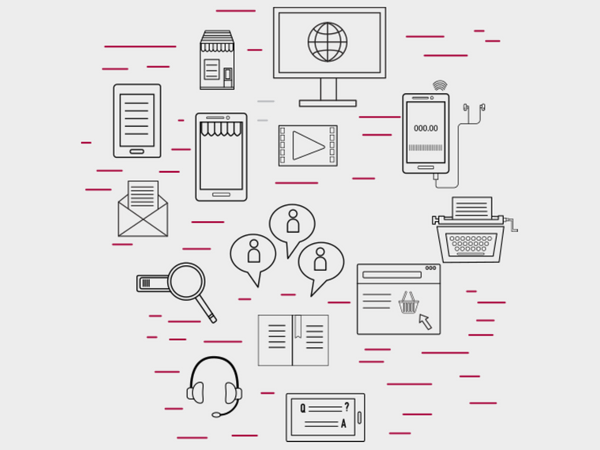In today’s unified commerce, with the evolution of the communication channels and platforms, the customer journey has changed dramatically.
Although the stages of the customer journey remain the same (search for products, evaluate options, buy and use the product/service), each one of these stages has become much more complex. Each customer has its own journey pattern, and therefore most companies are struggling to truly understand the customer behavior and effectively address the customer’s needs. This often leads to a less-seamless experience for the shoppers.
To leverage the customer journey and turn visitors into long-term loyal connections to your brand, you need to start analyzing your customer’s interactions. What channels do they visit to interact with you? How are they feeling at each stage of the journey? What are their expectations? What motivates them or what helps them make the final decision? If you do know the answers, keep up the good work. If not, then mapping your customer’s journey is essential for you.
What is customer journey mapping?
Journey mapping is an effective technique that helps you define and better understand all the touch points that your customers contact and engage with your company online or offline.
Although customer journey maps are being widely used by customer experience, according to Forrester, more than half of Customer Experience pros are still mapping their first journeys. More specific, 54% of Customer Experience professionals said their brand is either just getting started with mapping its first journey (20%) or has mapped 5 or fewer journeys (34%).
Mapping the customer journey is like creating personas for your business, except that it goes beyond that; not only it helps you focus on the person, but also visualize their experience.
How can mapping your customers’ journey help your business?
Mapping your customer’s path from the very first interaction with your brand to the last can help your business in many ways. More specific, it helps you:
- Move at the speed of your customers and stay up to date with customers’ rapidly evolving needs.
- Get greater alignment between teams. Journey mapping should not be isolated within the marketing department. It is a tool that should be used by all teams across your organization to empower their understanding of the customer and their role in creating greater customer experiences.
- Optimize customer experience. By getting a greater understanding of how your customers are currently interacting and engaging with your brand, you can explain how your products and services help their lives, goals and every stage of the journey.
- Identify gaps. Find communication touchpoints you may have missed whether from digital or physical channels.
- Get closer to your customers. Uncover what their pain points and their preferences are. Through advanced analytics and data, you can know and focus on what customers really want.
While there are many templates of customer journey maps, you should create your own that helps you tell your customers’ story in the best way possible, focusing on their real needs. Remember that customer preferences can easily shift, especially as technologies grow.
Customer journey mapping is not a one-time event or static. Instead of creating a journey map and burying it in the drawer, try to constantly update it and share it across your organization. It will help you make smarter business decisions and add value to your customers.








